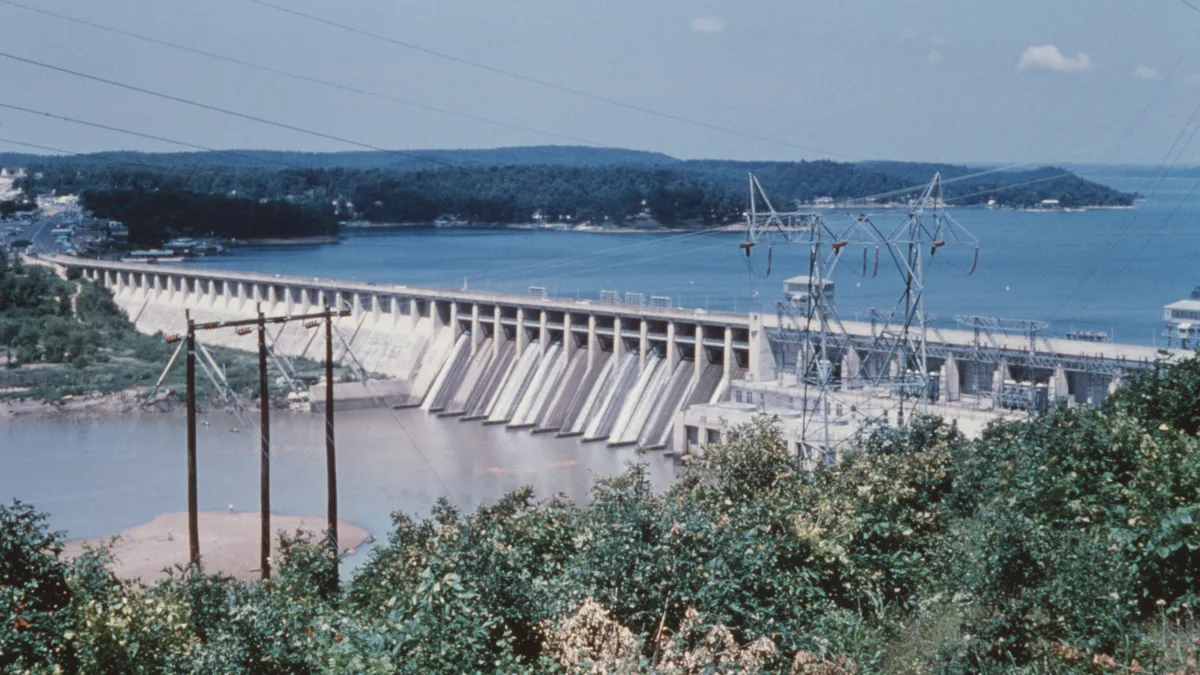The following is a contributed article by Alicia Barton, CEO of FirstLight Power and former CEO of the Massachusetts Clean Energy Center and the New York State Energy Research and Development Authority.
In just a few days, delegates from the Biden administration are heading to Glasgow for the United Nations Climate Change Conference (COP26) to carve a path forward to address the global climate crisis. As a centerpiece of its efforts, President Biden is hoping to bring with him a legislative package that will spur the growth of new, zero-carbon resources. However, in order to send the strongest possible message to the world, and to clean energy advocates at home, the reconciliation package must be updated to recognize the critically important role of existing, zero-carbon energy resources such as hydropower.
Hydropower today provides clean, renewable energy to over 30 million U.S. homes. Yet as we move towards President Biden's goal of a 100% clean electricity grid by 2035, hydropower's flexibility may be its most important attribute. As the scale up of new renewable energy sources such as wind and solar increases, our electric grid will face the challenge of operating in an entirely new universe that is dominated by variable resources. Although this transition is critical in our fight against climate change, it will require large amounts of flexibility and long duration storage that only hydropower can provide. It's the dispatchable renewable that integrates other renewable resources.
Earlier this year, organizations from the river conservation, climate and hydropower communities came together to find solutions to enhance the role of hydropower in our nation's efforts to decarbonize and address America's 90,000 dams. We worked with a host of legislative champions, including Reps. Annie Kuster (D-N.H.) and Don Young (R-Alaska), and Sens. Maria Cantwell (D-Wash.), Lisa Murkowski (R-Alaska), and Dianne Feinstein (D-Calif.) to develop the bipartisan Twenty-First Century Dams Act (H.R. 4375 and S. 2306), a historic proposal to address the "3Rs": Retrofit existing dams to generate additional carbon-free electricity; Rehabilitate dams with safety concerns; and Remove dams determined by their owners to no longer serve a purpose.
Yet this innovative proposal appears to have been overlooked in the rush to develop the reconciliation package before COP26. Instead, the emerging reconciliation bill may take one step forward and two steps backwards on climate due to its unintentional impact on existing hydropower. Without the previously proposed Clean Electricity Performance Program, there's no backstop to support existing zero-carbon baseload resources. The reconciliation package addresses this gap for zero-carbon nuclear by offering production tax credits through the new section 45W program, yet it fails to address existing zero-carbon baseload hydropower. This is a major gap in the national clean energy strategy.
According to a US Department of Energy study, investing in hydropower can avoid 5.1 billion metric tons of CO2 emissions by 2050. The same study also underscored the economic potential of the hydropower sector noting that it could create 195,000 good-paying U.S. jobs. We need to acknowledge this as a critical component as we must spur new jobs in the transition to cleaner energy sources.
Yet the opposite is also true. Since hydropower is a proven form of renewable energy – the infrastructure needs to be maintained and reinvestment is needed. For example, in North America, the average age of a hydropower plant is nearly 50 years – many of its most vital projects, turbines and equipment need upgrades and modernization. A related issue is that by 2030, the licenses for 281 hydropower facilities will expire, putting 13 GW of zero-carbon generation at risk. A recent industry survey shows that 37.5% of U.S. hydropower owners in the U.S. are “actively considering” decommissioning, up from just 12.5% a few years earlier.
My company, FirstLight Power, knows first-hand the opportunities and challenges of operating hydropower assets. Located in Massachusetts and Connecticut, our hydropower facilities are helping the New England region meet its decarbonization targets by integrating and backstopping renewables. However, we face uncertain economics without federal and state policy support that can help us keep up with the capital needs and operations and maintenance on these complex generating stations.
As a solution, the Twenty-First Century Dams Act would create a 30% investment tax credit to support the 3Rs. Specifically, the measure would incentivize investment in grid resilience, dam safety upgrades, and environmental enhancements at existing hydropower facilities, as well as the removal of obsolete dams, with a direct pay option for public power.
Recently, Sen. Ron Wyden (D-Ore.), chairman of the Senate Finance Committee, publicly indicated that he is working to include the "3R" tax credit for existing hydropower in the reconciliation package. And as an industry, we thank him. We are hopeful that Congress also recognizes that maintaining and enhancing existing hydropower is critical for the operation of a 100% clean energy grid.
The road to a decarbonized grid simply doesn't happen without hydropower and pumped storage. Recognizing that we need zero-carbon resources to combat climate change, President Biden will announce to the world at COP26 that the reconciliation package provides incentives to bolster wind, solar, batteries and even our existing zero-carbon nuclear fleet — and I hope he will include existing hydropower. If we fail to leverage every renewable resource, we heighten the risk of failure in our fight against climate change, at a moment when we can't afford a single step backwards.






















